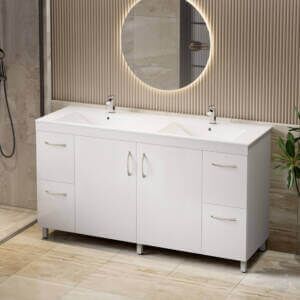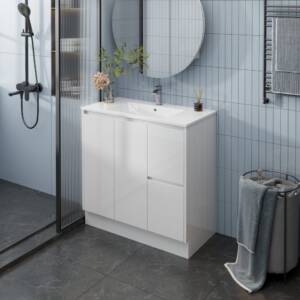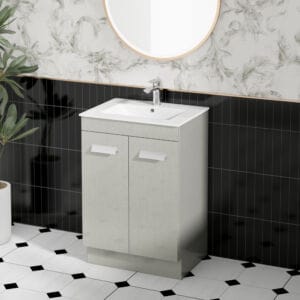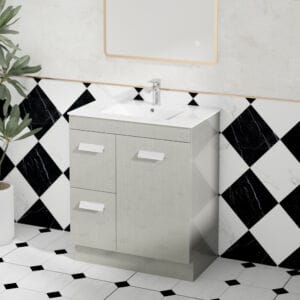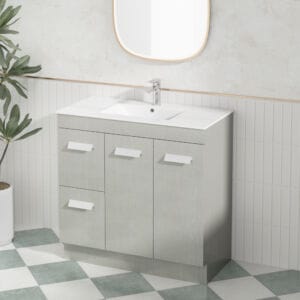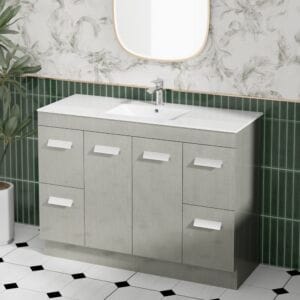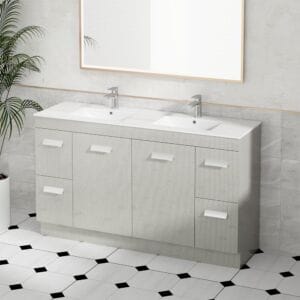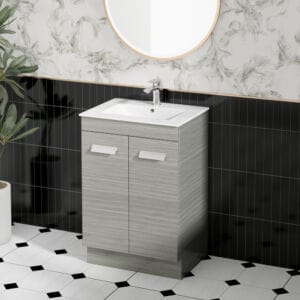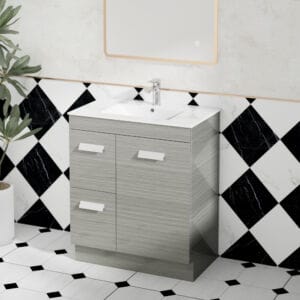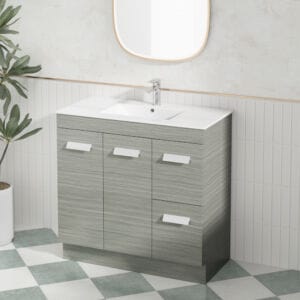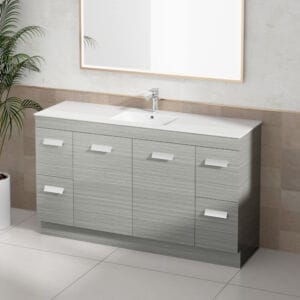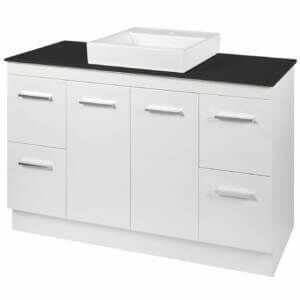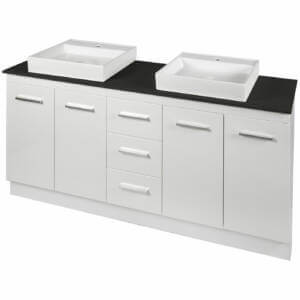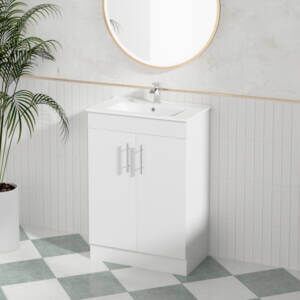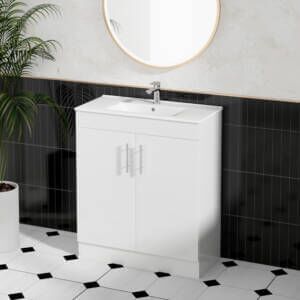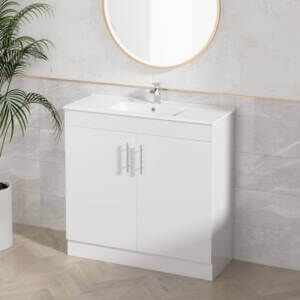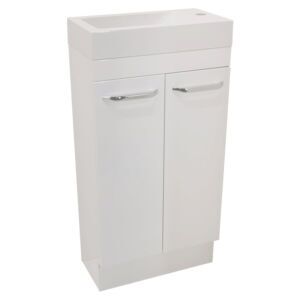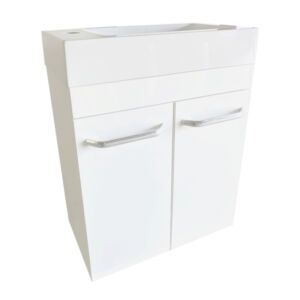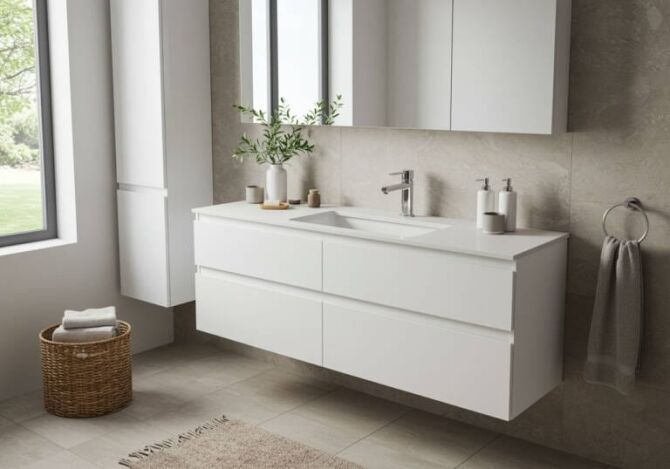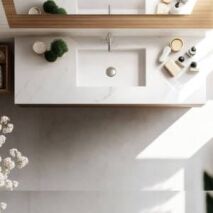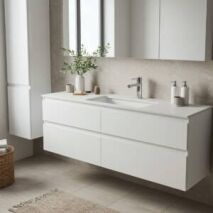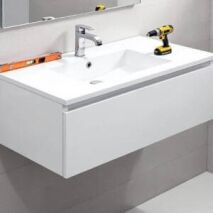Freestanding bathroom vanities are an increasingly popular choice for Perth homeowners undertaking a bathroom renovation, offering stylish storage solutions and exceptional versatility. Unlike built-in cabinetry, a freestanding vanity stands independently on the floor, providing easy installation and compatibility with almost any bathroom design. Whether you’re creating a contemporary or traditional look, a freestanding vanity blends effortlessly with various decor styles. So, what do you consider when buying a bathroom vanity? This guide highlights essential factors, ensuring you choose the ideal free standing vanity for your space and practical needs.
Advantages of Freestanding Bathroom Vanities
Freestanding bathroom vanity units offer numerous advantages, making them a preferred choice among Perth homeowners. Their convenient installation means they can be easily positioned or replaced without significant modifications, making them ideal for quick renovations or bathroom updates. Available in various sizes, floor standing vanities provide flexible design options suitable for bathrooms of all dimensions. They offer ample storage capacity, enhancing bathroom organisation and keeping essentials neatly concealed. Additionally, contemporary appearance and versatile styling mean floor mounted vanities complement virtually any decor style. For durability in moisture-rich spaces, waterproof vanity options further add to their practical appeal.
Key Considerations When Choosing Freestanding Vanities
When selecting your freestanding vanity, consider size, material durability, vanity top options, and overall design style to ensure the perfect match for your bathroom.
Size & Dimensions
Selecting appropriate vanity dimensions is essential for maximising bathroom space and usability. Carefully measure available bathroom space to find a suitable fit—Ross’s Discount Home Centre provides freestanding vanities in popular widths, including 450mm, 600mm, 750mm, 900mm, 1200mm, and 1500mm. Smaller sizes suit compact bathrooms, while wider models, like a 900mm freestanding vanity or larger with double basins, offer greater practicality and storage.
Material & Durability
Material choice significantly influences long-lasting durability and ease of maintenance. At Ross’s, most freestanding bathroom vanity units feature high-quality PVC construction, offering exceptional bathroom moisture resistance and durability. Being completely waterproof, PVC floor mount vanity options are ideal for Perth’s humid climate, preventing water damage and ensuring easy maintenance. Each vanity also includes a 5-year warranty, providing additional peace of mind and reliability for your investment.
Vanity Top & Cabinet Options
Deciding between a freestanding bathroom vanity without top and an integrated vanity top impacts your vanity’s flexibility and design. Integrated basin tops provide convenience and straightforward installation, ensuring a seamless appearance and easy cleaning. However, choosing a freestanding vanity cabinet only gives greater customisation options, allowing you to select a vanity top and basins tailored to your bathroom’s style and functionality needs. Consider your design preferences and practicality requirements carefully when choosing between these two vanity configuration types.
Design & Style Choices
Freestanding vanities offer broad versatility in design, fitting seamlessly into modern, traditional, or minimalist bathroom decor. A freestanding bathroom vanity style allows you to create striking visual aesthetics, with finishes ranging from clean white, classic timber-look, or sleek contemporary textures. With various colours, materials, and configurations available, freestanding vanity options easily elevate bathroom aesthetics and complement diverse contemporary bathrooms, ensuring your space reflects your style and taste.
Freestanding Vanity Installation and Placement
Proper placement and installation of your freestanding vanity ensure optimal functionality and aesthetics. Typically positioned with the freestanding vanity against a wall, this style offers greater flexibility and easier installation than built-in vanities. Our freestanding vanities are DIY-friendly, requiring only basic plumbing compatibility checks and careful wall alignment. While DIY installation is achievable for confident homeowners, professional installation is advisable if you’re unsure. For detailed installation tips, see our guide on how to install a freestanding vanity.
Freestanding Vanity Cost Considerations
Freestanding bathroom vanity prices vary widely based on size, material, and design features. At Ross’s Discount Home Centre, our affordable, high-quality freestanding vanity options start from just $420 for compact 450mm units, with premium floor standing bathroom vanity units reaching around $2,200 for large 1500mm models featuring custom vanity top options. This competitive pricing ensures affordability and exceptional value for money, helping you make a long-term investment that suits your bathroom renovation budget without compromising quality or style.
Choosing the perfect freestanding bathroom vanity is simple when considering size, materials, installation, and design. As a trusted supplier, Ross’s Discount Home Centre offers Perth homeowners quality assurance and affordable vanity solutions. Visit our showroom or browse online for easy decision-making. For more tips, see our Bathroom Vanity Buying Guide.
